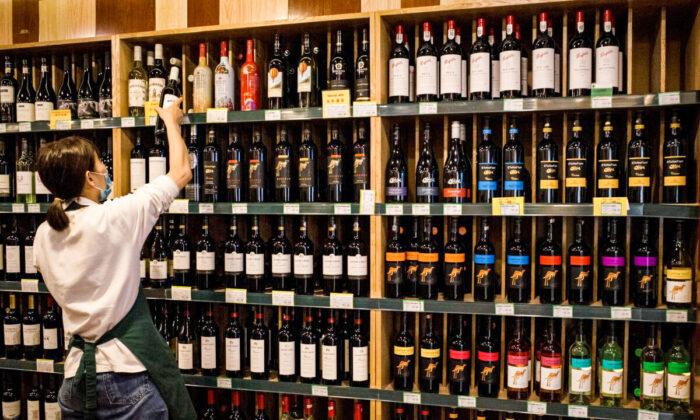China is restocking its shelves with Australian wine, and exporters are toasting a surge in sales, but the industry remains realistic about the future of a market that has changed dramatically since its government imposed crippling tariffs four years ago.
Latest Australian Bureau of Statistics (ABS) trade merchandise figures show that Australia’s biggest wine exporting state, South Australia (SA), sent more than $343 million (US$227.5 million) of wine to China in the three months after trade restrictions were lifted at the end of March.
As a result, SA wine exports grew by 19 percent and accounted for two-thirds of the value of the country’s total wine exports over the last financial year—$1.56 billion (US$1 billion) out of $2.3 billion (US$1.5 billion).
Australian wine exports to China fell off a cliff in November 2020 when China began imposing tariffs of more than 200 percent.
By 2023, Australian wine exports to China had slumped to 1.4 million litres valued at $10.1 million (US$6.7 million), after peaking at 121 million litres worth $1.3 billion (US0.86 billion) in 2020, while the number of exporters dropped from 2198 to 117.
The removal of tariffs in March led to a huge sales spike, lifting national wine exports to China last financial year to $400 million (US$265.3 million) and 33 million litres.
Australian Grape & Wine chief executive Lee McLean said it was a strong start, but the industry was mindful that the market in China had changed over recent years.
“It’s important to take a clear-eyed assessment of the market,” he said.
“While China will be a very important market for Australia in the years ahead, it is unlikely to return to the $1.2 billion (US$0.8 billion) per annum export sales we experienced prior to the import duties being imposed.”
McLean said the industry was also conscious that China would not solve the immediate problems associated with oversupply in Australia.
In August last year, Rabobank estimated that the Australian wine surplus would take at least two years to work through, with 2.8 billion bottles in storage.
Wine Australia manager, market insights, Peter Bailey said the oversupply was currently around 400 million litres of mainly red wine.
China was “definitely a good red wine market,” he said.
“But a lot of that oversupply in red wine is coming from bigger-producing inland regions in the Riverland, Riverina and Murray Darling, Swan Hill, and they’re more at the commercial end of prices.
“The wines that are going into China are very much at the higher premium end.”
Bailey said that while the export figures were very positive, they did not necessarily equate to retail sales.
“It'll take some time for us to understand: is that sustainable demand, or is that just restocking?” he said.
The next export figures, for the September quarter, would be published in October, providing a better idea about whether Aussie wine was moving off the shelves.
Meanwhile, Wine Australia is hosting a roadshow in China later this month, with 50 exhibitors showcasing 140 brands in Beijing, Shanghai, Guangzhou, and Chengdu.
SA Trade Minister Joe Szakacs is also leading a delegation to China this week with business and government meetings aimed at furthering the cause of SA’s wine, seafood, agribusiness, and technology exporters.







